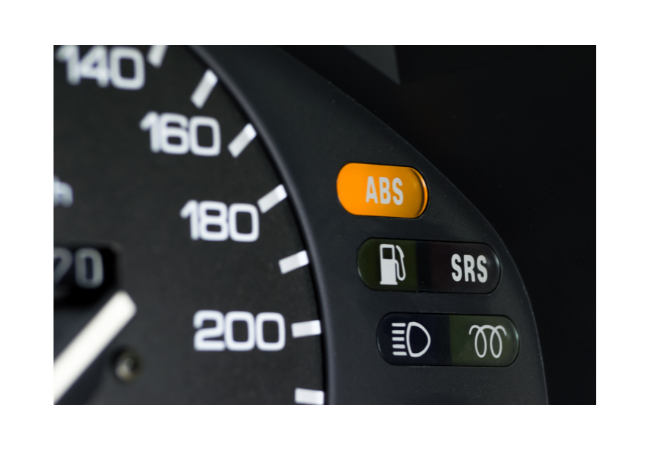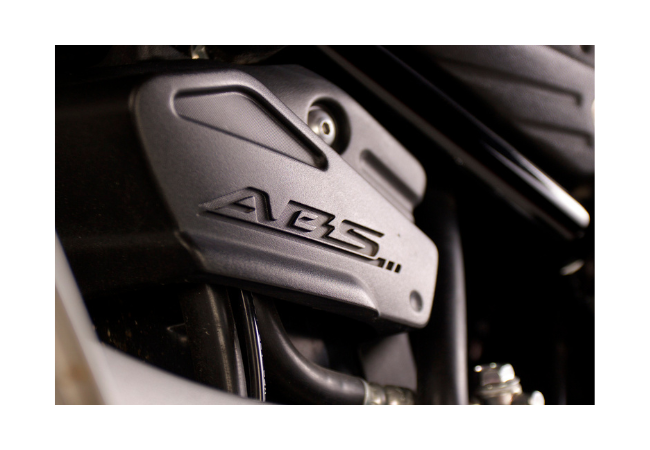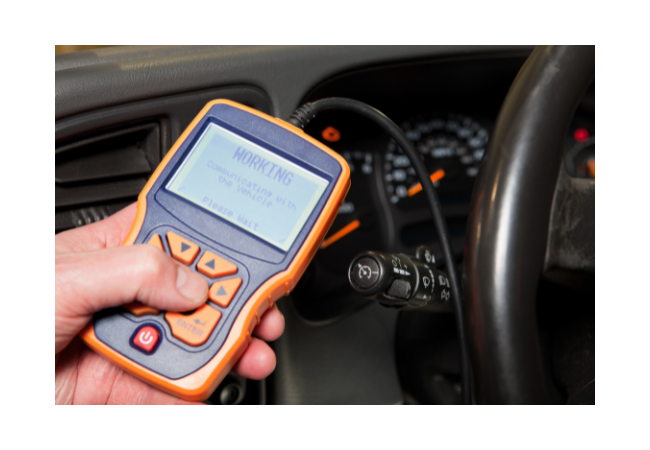Ever faced an illuminated ABS light on your dashboard, leaving you puzzled and concerned about your vehicle’s safety? Worry no more! Our foolproof guide on how to reset ABS light will walk you through understanding the importance of ABS light and how to reset it on your braking system in a few simple steps. So buckle up and get ready to become your own car expert, resolving ABS light issues like a pro and ensuring a safe driving experience.
Contents
Key Takeaways
- Understand the significance of ABS and common causes for activation.
- Have the necessary tools, skills, and knowledge to diagnose & reset ABS light.
- Seek professional help when issues persist or are complex.
Understanding the ABS Light

The ABS light, or the ABS warning light, is an indicator of potential issues in your vehicle’s Anti-Lock Braking System. When the ABS light illuminates, it signifies a malfunction in the ABS system, disabling it and often deactivating the traction control and warning lights as well. This could seriously compromise the safety, which is why it’s important drivers take immediate action when the traction control light ABS warning light, or check engine light appears.
But fear not, our guide will help you diagnose and reset the ABS light in a simple and efficient manner.
Before we detail the steps to reset the ABS light, let’s first grasp the significance of the ABS system and the usual triggers for ABS light activation. This knowledge will help you tackle the problem effectively and ensure a smooth and safe drive.
The Importance of ABS
The Anti-lock Braking System (ABS) is a great safety addition for vehicles. It helps to prevent the wheels from locking up or skidding during hard braking. This means that even in wet, snowy, or icy conditions, the ABS system keeps you in control of your brake pedal and steering, allowing you to maintain a shorter stopping distance. This is particularly beneficial for inexperienced drivers, ensuring they can handle their vehicle safely even under challenging conditions.
Addressing the ABS light issue promptly is vital in maintaining road safety and preserving your vehicle’s braking system capability. Leaving the ABS light unattended could result in further damage to the ABS brake system itself, as well as other components, and increase the risk of a collision.
Now, let’s delve into the usual reasons for ABS light activation and the methods to diagnose these issues.
Common Reasons for ABS Light Activation
There are several common reasons that could cause the ABS light to activate, such as faulty sensors, depleted front brake fluid level, and impaired components. To accurately identify the root cause, it’s recommended to either have proper diagnostics performed at a service center or use an OBD2 scanner to retrieve the associated error code. This will help you determine if there’s a problem with the ABS wheel speed sensor or another component (ABS control module) that needs attention.
If the issue persists even after addressing the ABS light causes, it’s advisable to seek professional help. Disconnecting the car battery for a short period of time might reset the illuminated ABS light, but it’s not a guaranteed solution. A thorough diagnosis by an expert mechanic is essential to ensure that the ABS pump, brake fluid level sensor, and other components (wheel speed sensor) are functioning properly.
Diagnosing ABS Light Issues
Before trying to reset the ABS light, it’s paramount to figure out the root cause behind it. By doing so, you can ensure that the problem is resolved effectively and the ABS light doesn’t illuminate again in the future. Our guide provides a beginner-friendly approach to diagnosing ABS light issues, helping you understand and tackle the problem with your anti lock braking system with confidence.
To troubleshoot ABS light issues, certain tools, skills, and a clear understanding of the ABS light illuminating error codes would be required. This knowledge will enable you to pinpoint the exact component that needs attention and guide you in resetting the ABS light.
Necessary Tools and Skills
To troubleshoot and fix ABS light issues, you must have certain basic tools and skills. The primary tools required for diagnosing ABS light issues are:
- OBD2 scanner: Used to read the error codes stored on the vehicle’s onboard computer, which will help you identify the problematic component. A cost-effective OBD2 scan tool can be purchased for as little as $20.
- Multimeter: Used to measure electrical values and test the components of the ABS system.
- Basic tool set: Includes various tools such as wrenches, pliers, and screwdrivers, which are necessary for removing and installing components during the troubleshooting process.
Having these tools and skills will enable you to effectively diagnose and resolve ABS light issues in your vehicle.
When it comes to DIY skills, basic knowledge of replacing a fuse is required. However, it’s recommended that only more experienced DIYers attempt to remove ABS parts, as this can be a complex task.
With the right tools and skills at hand, you’ll be well-equipped to diagnose and resolve ABS light issues.
Interpreting ABS Error Codes
Comprehending ABS error codes is fundamental to diagnosing ABS warning light issues. These codes are generated by the onboard computer and indicate the component responsible for the problem.
To interpret ABS error codes, you’ll need to:
- Use an OBD2 scanner, which can connect to your vehicle’s onboard computer and retrieve the associated error codes.
- Research online with the error code and your vehicle’s make and model to learn the meaning of the ABS error code.
- Use an OBD codes lookup tool or an advanced OBD2 scanner to help with interpreting the error code.
By interpreting ABS error codes, you’ll be able to pinpoint the exact issue within the ABS system, making it easier to resolve and reset the ABS light.
Step-by-Step Guide to Resetting the ABS Light

Now, equipped with a clear understanding of ABS light issues and their diagnosis, let’s proceed to our step-by-step guide to resetting the ABS light. This guide will walk you through the process of addressing the underlying issue and resetting the ABS light, ensuring a safe and smooth driving experience.
Our guide revolves around three fundamental steps: inspecting and substituting the ABS fuse, cleaning or replacing the ABS sensor, and using an OBD2 scanner to reset the ABS light. By following these steps, you’ll be able to reset the ABS light and get back on the road with confidence.
Checking and Replacing the ABS Fuse
The first step in resetting the ABS light is to check and replace the ABS fuse if necessary. A blown ABS fuse is a common cause of ABS light issues and can be easily resolved by replacing it with a new one. To check the ABS fuse, follow the applicable instructions provided in your vehicle’s owner’s manual.
If you find that the ABS fuse is no longer functioning, install a new fuse as instructed. Additionally, inspect the inner ports where the fuses are installed to ensure there’s no damage or debris that could cause further issues.
With the ABS fuse checked and replaced, you can proceed to clean or replace the ABS sensor.
Cleaning or Replacing the ABS Sensor
The ABS sensor is another common cause of ABS light activation. If the ABS fuse is in good condition, the next step is to clean or replace the ABS sensor, as necessary. To clean or replace the ABS sensor, follow the instructions provided in your vehicle’s owner’s manual or seek guidance from a professional mechanic.
Replacing the ABS sensor involves disconnecting the cable and unscrewing the sensor’s housing, mount, and attachment. After removing the old sensor, mount and attach the new sensor as instructed.
Once the ABS sensor has been cleaned or replaced, you’re ready to move on to the final step of resetting the ABS light using a scan tool, such as an OBD2 scanner.
Using an OBD2 Scanner to Reset the ABS Light
After addressing the underlying issue with the check engine light, whether it’s a blown ABS fuse or a damaged ABS sensor, you can use an OBD2 scanner to reset the ABS light. To do this, follow these steps:
- Locate the OBD2 port, which is usually positioned beneath the dashboard on the driver’s side.
- Connect the OBD2 scanner to the port.
- Ensure that the scanner is firmly attached to establish a proper connection.
Activate the ignition without starting the engine by inserting the key into the ignition and turning it to the “on” position. Follow the instructions on the scanner’s display to select the ABS system and reset or clear the ABS codes using the ABS control module.
With the reset ABS light, you’re ready to hit the road with a properly functioning ABS system.
When to Seek Professional Help

While our guide is designed to help you diagnose and reset the ABS light on your own, there are instances where professional help may be necessary. Persistent ABS light problems and complex ABS issues may require specialized expertise to resolve effectively. By recognizing when it’s time to consult a professional, you can avoid further damage to your vehicle and ensure a safe driving experience.
Even after following our guide, if ABS light issues persist, it’s important to recognize when to call in a professional. Let’s explore the specific scenarios that warrant a visit to a professional mechanic.
Persistent ABS Light Problems
If the ABS light remains lit despite every suggestion from our guide, you should consider seeking professional help. Persistent ABS light problems can be caused by a variety of factors, such as:
- A blown ABS fuse
- A damaged ABS sensor
- A faulty ABS computer module
- A damaged stator ring
- A loss of hydraulic pressure
A professional mechanic can accurately diagnose the issue and provide the necessary repairs to ensure your vehicle’s ABS system functions properly.
Complex ABS Issues
In some cases, you may encounter more advanced ABS problems that require specialized expertise to resolve. Issues such as unresponsive brakes or the vehicle pulling to one side during braking are examples of complex, ABS systems have issues that warrant professional assistance. A professional mechanic can diagnose and repair these issues, ensuring your vehicle’s ABS system operates safely and effectively.
Seeking a professional’s advice for complex ABS issues can help prevent additional damage to your vehicle and guarantee a safe driving experience. Don’t hesitate to seek help when necessary, as it’s always better to be safe than sorry.
Summary – How to Reset ABS Light
In conclusion, understanding the importance of the ABS light and being able to diagnose and reset it is crucial for maintaining your vehicle’s safety and performance. Our foolproof guide has provided you with the knowledge and steps necessary to tackle ABS light issues like a pro, ensuring a smooth and safe driving experience.
Remember, when in doubt or faced with persistent or complex ABS issues, don’t hesitate to seek professional help. Your safety and the well-being of your vehicle should always be the top priority. So keep your ABS system in check and happy motoring!
Frequently Asked Questions
Is there a way to reset ABS light?
To reset the ABS light, disconnect the positive cable from your car battery, hold down the brake pedal to drain the vehicle’s electrical system, then plug the cable back in.
After restoring power, press the gas pedal three times to reset the light.
How do I turn off the ABS on my car?
To turn off the ABS on your car, find and remove the ABS fuse.
Alternatively, you can unplug the wheel speed sensor, the yaw sensor, or the ABS module to disable it.
What causes the ABS light to stay on?
The ABS light may remain on due to a number of causes, such as a blown fuse for the system, low brake fluid, defective wheel speed sensors, or a broken wire between the sensors and the controller.
These issues can often be addressed by checking the ABS module, brake fluid pressure reservoir, sensors, and wiring.
What is the ABS light and why is it important?
The ABS light is an important indicator that there may be issues with your vehicle’s Anti-Lock Braking System, which is necessary for safe driving and vehicle control during heavy braking.
This system is designed to prevent the wheels from locking up during heavy braking, which can cause the vehicle to skid and lose control. It is important to have the ABS system checked out if the ABS light is illuminated, as it could be a sign of a malfunction.
What tools and skills do I need to diagnose ABS light issues?
An OBD2 scanner, a multimeter, and basic tools are required to diagnose ABS light issues, as well as the necessary DIY skills.
